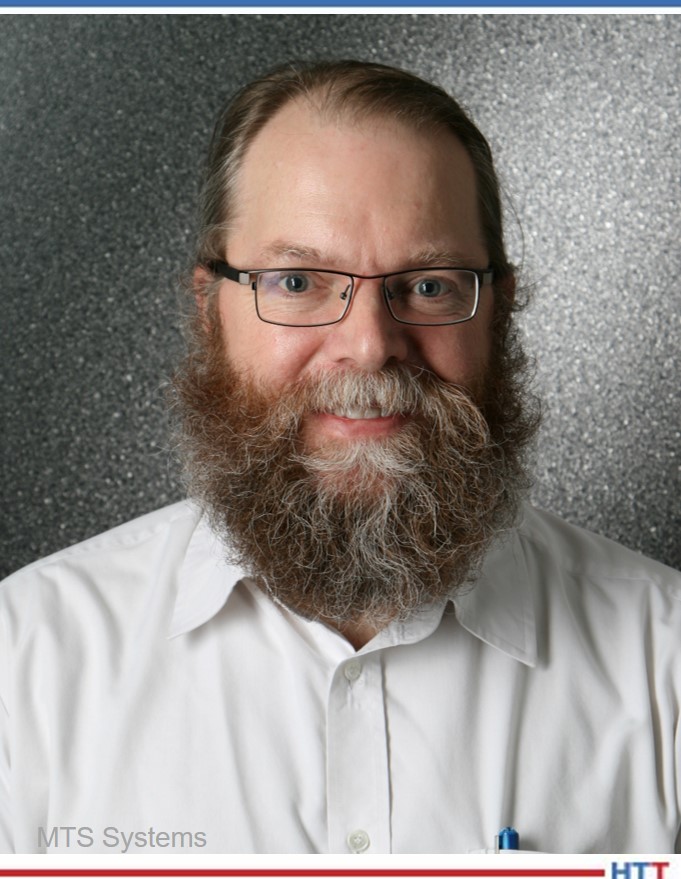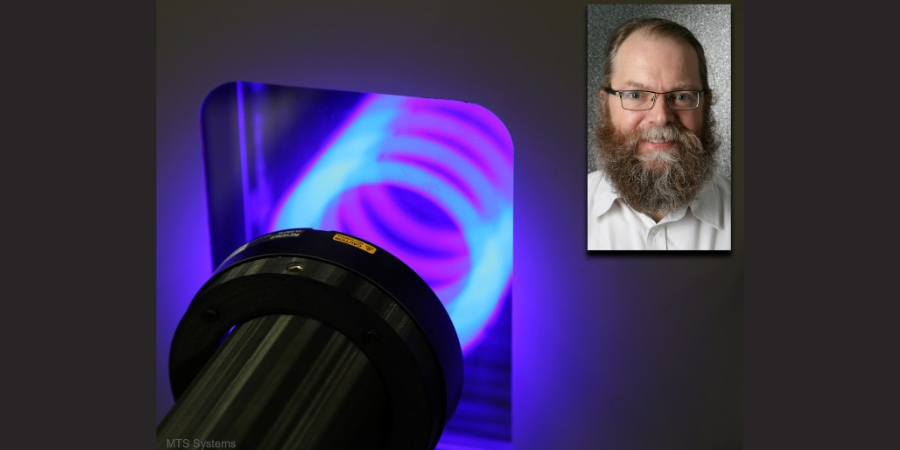![]() Designing ultra-efficient aircraft, lightweight automobiles, and modern power generation systems requires new materials with higher strength-to-weight ratios that can withstand higher operating temperatures for longer periods of time. These lighter weight, heat-tolerant materials help increase fuel efficiency and save energy, but characterizing these materials poses several challenges.
Designing ultra-efficient aircraft, lightweight automobiles, and modern power generation systems requires new materials with higher strength-to-weight ratios that can withstand higher operating temperatures for longer periods of time. These lighter weight, heat-tolerant materials help increase fuel efficiency and save energy, but characterizing these materials poses several challenges.
In this Technical Tuesday article, Dr. Erik Schwarzkopf, staff scientist at MTS Systems, will help you discover solutions to these challenges that will improve high-temperature testing of composites. This is the special focus article that appears in the Heat Treat Today November 2021 Vacuum Heat Treat Systems print edition. Return to our digital editions archive on Monday November 15, 2021 to access the entire print edition online!

Staff Scientist at MTS Systems
Testing at high temperatures can be complicated because “elevated temperature” means different things to different researchers. In general, there are three distinct temperature ranges for materials that have the highest strength-to-weight ratios. The first is for polymer matrix composites, or PMCs, from 392°F to 932°F (200°C to 500°C). The second is for metals, from 1472°F to 1832°F (800°C to 1000°C). The third is for ceramic matrix composites, or CMCs, which are tested up to 2732°F (1500°C). In each range, there are tradeoffs that test engineers need to consider in order to measure material properties at elevated temperatures and acquire high-quality results.
Problems arise when dealing with objects that need to touch the specimen or be near the specimen, such as grips, extensometers, furnaces, and chambers. The problems tend to be systemic, so solving an issue with one component tends to raise issues with another component.
In many cases, these issues start with specimen geometry. For example, PMC and CMC specimens are flat, and they cannot be grabbed in the same way as a round, threaded, or button-head metallic specimen. For gripping PMCs, cost-effective and easy-to-use hydraulic wedge grips are a good choice. Hydraulic wedges can apply consistent pressure to protect the fragile PMC specimen fibers from crushing and are able to maintain the correct pressure even as the chamber and wedge head heat up. These grips are relatively large, so they are often paired with a larger environmental chamber. The environmental chamber is typically larger than the furnaces required for higher temperature tests, but the thermal mass of the grips and chamber leads to very stable temperatures.
However, the larger chamber makes it difficult to use contacting extensometers, which test engineers would normally use in these applications. With a smaller chamber, you can situate the sensing technology outside the chamber and allow it to translate motion from the contact arm; but with a larger chamber, you cannot effectively translate that motion outside the chamber because the arm gets too long. The extensometer needs to be inside the chamber — but the elevated temperature damages the sensitive electronics.
"One of the best ways to increase high-temperature testing success is to work with a solution provider who understands the entire test."
One way to solve this issue with contacting extensometers is to use video extensometry and digital image correlation. These non-contacting strain measurement devices can be located outside the chamber, away from the heat that would damage other extensometers. A chamber with a window will let you look inside and measure motion in real-time. But this solution is not without its complications, either. You need a light inside the chamber to illuminate the specimen for the camera, and at some temperatures, the specimen’s illumination (or blackbody radiation) reduces the contrast and accuracy of video extensometry. You can mitigate these problems by using blue LEDs to illuminate the chamber and optical filtering to minimize blackbody effects and enhance contrast.
PMCs and CMCs are typically engineered as flat structural components, but given the gripping challenges presented by flat specimens, some people have wondered why we cannot just use round specimens instead. Even with metals, it is often not possible to obtain a large enough portion of the material to make a round specimen, especially if the goal is to test material that has been in service. Sometimes, a small specimen is extracted from a larger component — specifically, turbine blades from jet engines. The blades that see the hottest application temperatures are grown from single crystal seeds with cooling holes to let air through. These intricately shaped blades do not have enough bulk to create a round specimen. Also, when the interdendritic spacing of a single crystal is similar to the specimen dimensions, the specimen might act quite differently than a bulk, round specimen.
Gripping specimens in high-temperature applications remains a challenge. A test engineer would normally use high-temperature grips for most high-temperature applications. But the CMC testing temperature range exceeds 1832°F (1000°C) and these grips would start to lose strength. Ideally, the grip should be as hot as possible to minimize the gradient, just not so hot that the grip itself starts to get soft. If a specimen is long enough, cold grips could be used. But some specimens cannot be made long enough, for the same reasons they cannot be made round. Even if cold grips are used, larger gradients are then introduced, which means more tests need to be run due to the variations in those gradients, and that adds expense.
To address these challenges in the highest temperature ranges, look for a grip that can be actively cooled in two different ways, depending on what temperature range is required. These versatile grips can be placed in an area of the furnace that is relatively less hot than the center zone. If the center zone is 2192°F (1200°C), the top and bottom portions are closer to 1832°F (1000°C). With active cooling, the grip can stay in the cooler part of the chamber and still hold the specimen in place with an acceptable gradient. For testing metals up to 1832°F (1000°C), you can use a grip that is moderately cooled. For testing CMCs up to 2732°F (1500°C), look for a grip that is aggressively cooled.
One of the best ways to increase high-temperature testing success is to work with a solution provider who understands the entire test. Many labs attempt to build high-temperature testing solutions by assembling components from different providers. Unfortunately, the interdependencies and tradeoff s are too entangled. The extensometry expert may not understand how to make their offering work through a window or inside of a chamber. Grip experts may be able to make cold grips work, but the gradient is so large that it calls the test results into question. Find a provider that can offer the systems integration expertise you need to reduce testing variability, allowing you to run fewer tests and get accurate results.
About the Author: With more than 30 years of experience in materials testing, metallurgy, and system engineering, MTS Systems staff scientist Dr. Erik Schwarzkopf frequently shares his testing expertise in technical articles and conference presentations.
For more information: Contact Dr. Schwarzkopf at erik.schwarzkopf@mts.com






